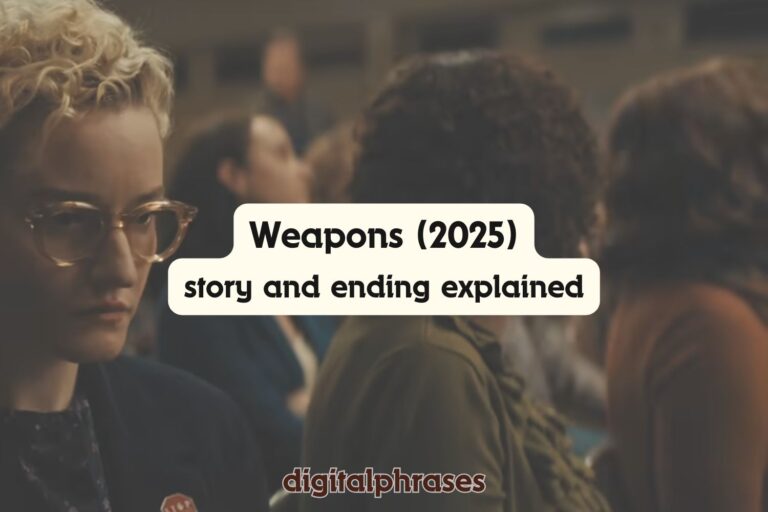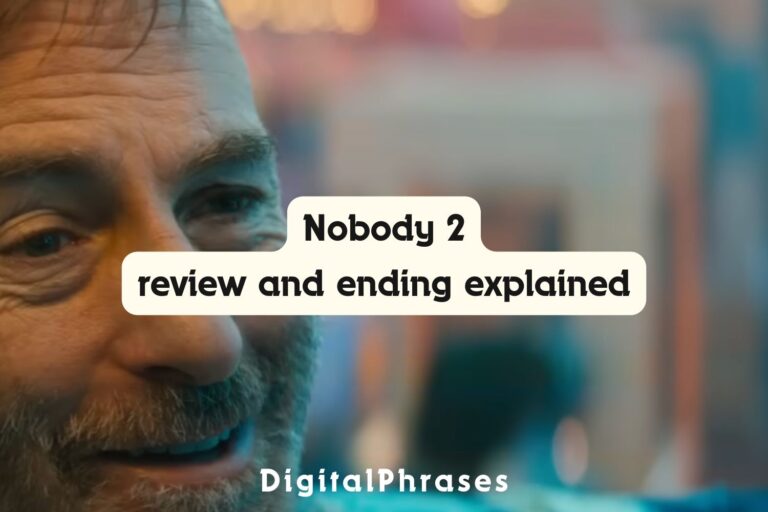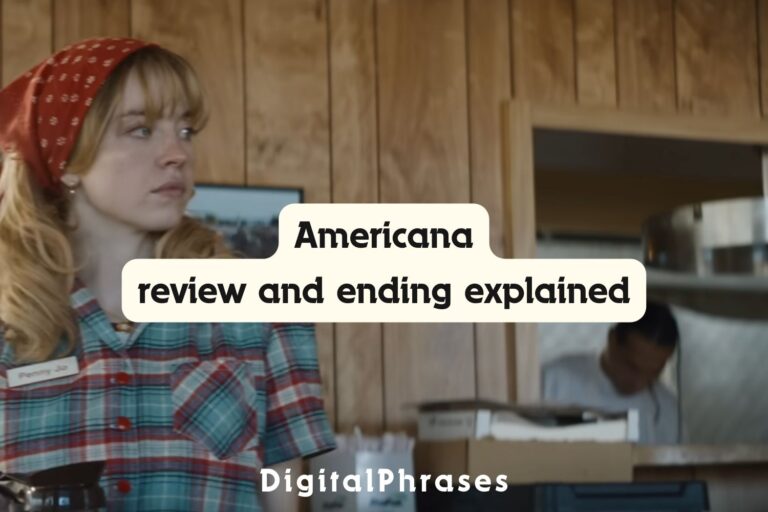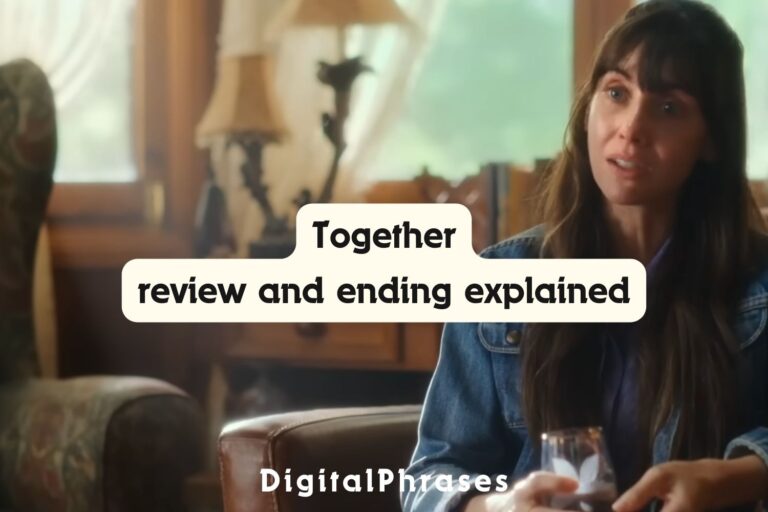Jimmy and Stiggs Review and Ending Explained
Joe Begos’ Jimmy and Stiggs is a fever dream of cocaine dust, neon slime, and claustrophobic alien terror shot in the director’s own apartment.
It’s loud, abrasive, chaotic—and yet strangely hypnotic. What begins as a junkie’s breakdown morphs into an alien invasion siege flick that blurs the line between addiction, paranoia, and actual intergalactic warfare.
Story Synopsis and Review
The film opens with Jimmy Lang (played by Begos himself), an out-of-work filmmaker drowning in booze and cocaine. He’s spiraling—calling his agent, leaving frantic recordings about missing time, and insisting he was abducted by aliens. Whether or not that’s true is deliberately fuzzy, and that ambiguity becomes the film’s core tension.
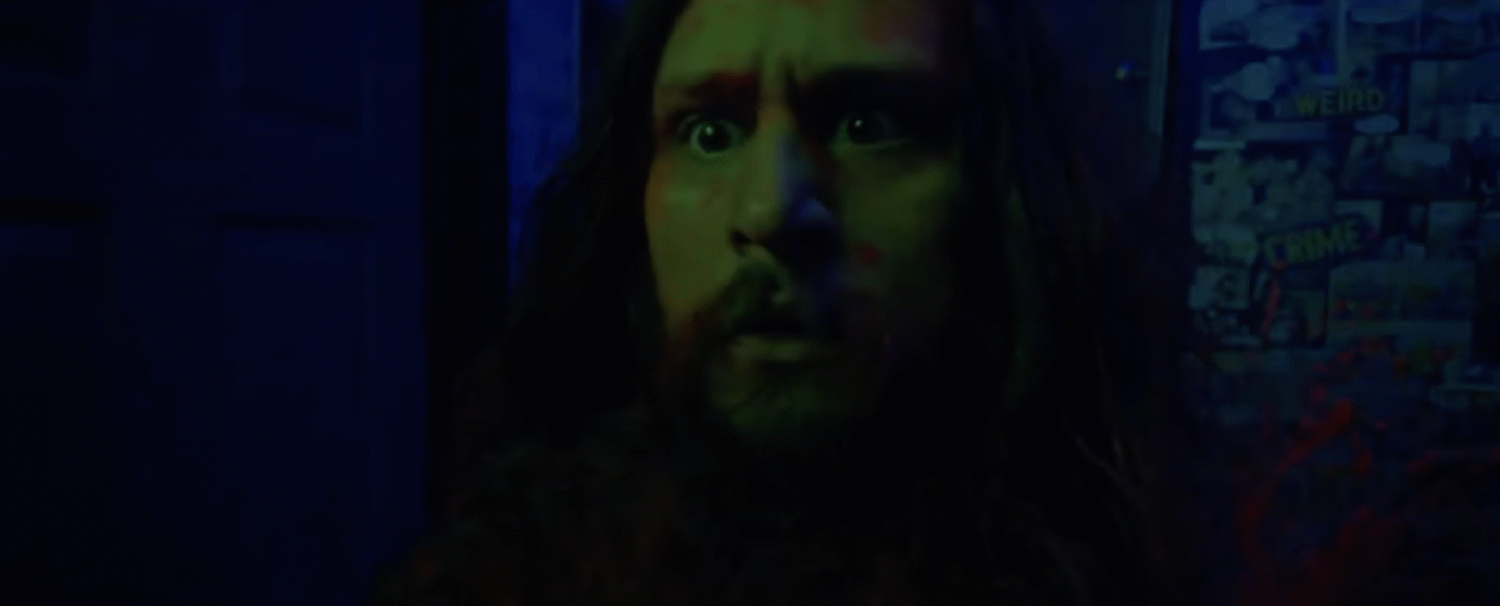
Enter Stiggs (Matt Mercer), Jimmy’s old friend, summoned to help prepare for the supposed extraterrestrial threat.
What follows is a looped cycle of substance abuse → paranoia → alien attack → more drugs → violent escalation. If it sounds repetitive, that’s because it is. But repetition is the point. Like a bad trip you can’t escape, the film locks us in a strobe-lit cage where time feels stretched, conversations go nowhere, and every moment teeters between comedy and horror.
Stylistically, Begos leans into the Evil Dead 2/Dead Alive school of gonzo splatter cinema. Aliens aren’t sleek Ridley Scott xenomorphs—they’re scrappy, foam-and-slime practical creations that look both absurd and unsettling. The gore isn’t red but glowing Nickelodeon green and orange slime, giving the violence a surreal, cartoonish texture. Think Rob Zombie directing a haunted house for MTV in 1995, with a stash of ketamine on standby.
Now, beneath the surface chaos, there’s something more interesting happening: Jimmy and Stiggs is a story about addiction, codependency, and the paranoia that comes with both.
Take the dynamic between Jimmy and Stiggs. These two are more than just old buddies—they’re estranged friends who clearly have unresolved tension. Jimmy pressures Stiggs, who’s six months sober, into drinking again just to “prove” he’s not an alien.
That scene is cruel, heartbreaking, and very telling: Jimmy weaponizes paranoia to drag his friend back into self-destruction. It’s a small moment, but it reframes the alien attacks as more than genre fun—they’re metaphors for the way addiction consumes not just the user, but everyone around them.
The constant swearing and juvenile insults?
Sure, it’s exhausting, but it also reinforces the film’s atmosphere of drug-fueled arrested development. These are men trapped in their own arrested adolescence, unable to articulate pain except through vulgarity. In that sense, the dialogue isn’t just filler—it’s thematic texture. Annoying, yes, but fitting.
The production context adds another layer. Begos shot this in his apartment over four years, improvising, rebuilding sets, and piling slime onto his own floors.
That DIY spirit bleeds into the film itself: it feels like a homegrown apocalypse, a siege film without escape, where the only battlefield is a single apartment and the only soldiers are two washed-up men too wasted to fight coherently.
Ending Explained
Okay, let’s talk about that ending—the part that’s confused, frustrated, or intrigued everyone who’s seen the film.
After endless cycles of alien attacks, benders, and betrayals, Jimmy ends up isolated in a surreal, spaceship-like environment. The mise-en-scène shifts from his grimy apartment to something that looks like a low-budget sci-fi set, all neon tubing and sterile walls. Is this real? Has Jimmy truly been abducted? Or is this just another hallucination brought on by substance abuse?
The climax is Jimmy’s ultimate act of paranoia: convinced that he’s infected or compromised, he begins mutilating himself, cutting off his limbs to prevent further alien corruption. The final images echo Boxing Helena or even Aronofsky’s Black Swan—the horror of the body as a site of both control and destruction.
So what does it mean?
Here’s my take:
- The Ambiguity is the Point
Begos deliberately refuses to clarify whether the aliens are real. Much like Friedkin’s Bug (another clear influence), the film thrives on uncertainty. In Bug, Ashley Judd and Michael Shannon feed each other’s delusions until the line between paranoia and reality collapses. Jimmy and Stiggs does the same, except with slime and chainsaws. - Addiction as Alien Invasion
The aliens can be read as externalizations of addiction. They’re cheap-looking, repetitive, and endlessly respawn—just like Jimmy’s cravings. Notice how alcohol temporarily “kills” the aliens? That’s a perverse inversion of sobriety: the very substance destroying Jimmy is framed as his weapon against the invaders. It’s tragic irony. - The Spaceship as Psychological Break
The shift to a spaceship setting at the end suggests total detachment from reality. Jimmy’s psyche has fully fragmented; he’s no longer in his apartment, no longer tethered to human connection (Stiggs is dead), no longer even in control of his body. The spaceship isn’t literal—it’s a mental construct, the final stage of his paranoid delusion. - Self-Mutilation as False Liberation
By cutting off his limbs, Jimmy seeks control over what he perceives as alien contamination. But instead of liberation, it’s annihilation. The gesture mirrors the destructive cycles of addiction: in trying to purge the “alien” inside him, he destroys himself.
In other words, the ending isn’t about whether aliens exist. It’s about what paranoia and addiction do to the human mind and body. Begos literalizes the internal collapse with slime, gore, and self-mutilation.
Why It Matters (and Why It Divides Audiences)
Jimmy and Stiggs is divisive because it straddles two modes:
- As genre fun, it’s a neon-drenched alien splatter flick with echoes of Raimi and Jackson. If you want absurd practical effects and gallons of slime, it delivers.
- As metaphor, it’s a grim allegory about addiction, paranoia, and toxic friendship. Beneath the noise, it’s a tragedy.
The problem—and maybe also the brilliance—is that Begos never fully chooses one mode. The repetition, the crude dialogue, the endless gore loops—these frustrate viewers who want a tight narrative. But they also serve the thematic core: addiction is boring, repetitive, and exhausting. That’s the point.
Consider how Evil Dead 2 balanced comedy, gore, and surreal terror. Raimi gave us cathartic release through slapstick mayhem. Begos denies us that release. Instead, he traps us in a cycle that feels as suffocating for us as it does for Jimmy. That’s bold, if not always enjoyable.
Final Thoughts
I’ll be real: Jimmy and Stiggs is not for everyone. It’s abrasive, repetitive, and exhausting. But it’s also a fascinating piece of DIY horror filmmaking—a four-year descent into paranoia shot in one apartment with neon slime as its lifeblood.
The ending, with Jimmy mutilating himself aboard a possibly imaginary spaceship, is the perfect encapsulation of the film’s thesis: whether aliens are real or not doesn’t matter. What matters is the paranoia that eats away at Jimmy’s mind, body, and relationships until nothing remains.
So yeah, it’s messy. But it’s also bold, weird, and kind of brilliant. Begos has made a film that feels like doing cocaine in a haunted house while debating The Thing with your drunkest friend. And love it or hate it, you won’t forget it.

